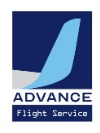GPS (ATP)
|
|
Título del Test: GPS (ATP) Descripción: AIRLINE TRANSPORT PILOT |



| Comentarios |
|---|
NO HAY REGISTROS |
|
If Receiver Autonomous Integrity Monitor-ing (RAIM) is not available when setting up for GPS approach, the pilot should. A— continue to the MAP and hold until the satellites are recaptured. B— proceed as cleared to the IAF and hold until satellite reception is satisfactory. C— select another type of approach using another type of navigation aid. Without Receiver Autonomous Integrity Monitor-ing (RAIM) capability, the accuracy of the GPS derived. A— altitude information should not be relied upon to determine aircraft altitude. B— position is not affected. C— velocity information should be relied upon to determine aircraft groundspeed. Overriding an automatically selected sensitivity during a GPS approach will. A— cancel the approach mode annunciation. B— require flying point-to-point on the approach to comply with the published approach procedure. C— have no affect if the approach is flown manually. If a visual descent point (VDP) is published on a GPS approach, it. A— will be coded in the waypoint sequence and identified using ATD. B— will not be included in the sequence of waypoints. C— must be included in the normal waypoints. GPS instrument approach operations, outside the United States, must be authorized by. A— the FAA-approved aircraft flight manual (AFM) or flight manual supplement. B— a sovereign country or governmental unit. C— the FAA Administrator only. Authorization to conduct any GPS operation under IFR requires that. A— the equipment be approved in accordance with TSO C-115a. B— the pilot review appropriate weather, aircraft flight manual (AFM), and operation of the particular GPS receiver. C— air carrier and commercial operators must meet the appropriate provisions of their approved operations specifications. What does the absence of the shaded arrowhead after the VDP on a GPS approach indicate?. A— Obstacle obstructions between the VDP and the runway. B— A 20:1 glideslope. C— A 60:1 glideslope. A pilot employed by an air carrier and/or com-mercial operator may conduct GPS/WAAS instrument approaches. A— if they are not prohibited by the FAA-approved aircraft flight manual and the flight manual supplement. B— only if approved in their air carrier/commercial operator operations specifications. C— only if the pilot was evaluated on GPS/WAAS approach procedures during their most recent proficiency check. Authorization to conduct any GPS operation under IFR requires that. A— the pilot review appropriate weather, aircraft flight manual (AFM), and operation of the particular GPS receiver. B— air carrier and commercial operators must meet the appropriate provisions of their approved operations specifications. C— the equipment be approved in accordance with TSO C-115a. When using GPS for navigation and instrument approaches, a required alternate airport must have. A— an approved instrument approach procedure, besides GPS, that is expected to be operational and available at the ETA. B— a GPS approach that is expected to be operational and available at the ETA. C— authorization to fly approaches under IFR using GPS avionics. A GPS missed approach requires that the pilot take action to sequence the receiver. A— over the MAWP. B— after the MAWP. C— just prior to the MAWP. . If the missed approach is not activated, the GPS receiver will display. A— an extension of the outbound final approach course, and the ATD will increase from the MAWP. B— an extension of the outbound final approach course. C— an extension of the inbound final approach course. 9739. “Unreliable,” as indicated in the following GPS NOTAMS: SFO 12/051 SFO WAAS LNAV/VNAV AND LPV MNM UNRELBL WEF0512182025-0512182049 means. A— within the time parameters of the NOTAM, the predicted level of service will not support LPV approaches. B— satellite signals are currently unavailable to support LPV and LNAV/VNAV approaches. C— within the time parameters of the NOTAM, the predicted level of service will not support RNAV and MLS approaches. What does “UNREL” indicate in the following GPS and WAAS NOTAM: BOS WAAS LPV AND LNAV/VNAV MNM UNREL WEF 0305231700 -0305231815?. A— Satellite signals are currently unavailable to support LPV and LNAV/VNAV approaches to the Boston airport. B— The predicted level of service, within the time parameters of the NOTAM, may not support LPV approaches. C— The predicted level of service, within the time parameters of the NOTAM, will not support LNAV/VNAV and MLS approaches. If flying a published GPS departure,. A— the data base will contain all of the transition or departures from all runways. B— and if RAIM is available, manual intervention by the pilot should not be required. C— the GPS receiver must be set to terminal course deviation indicator sensitivity. To use a substitute means of guidance on departure procedures, pilots of aircraft with RNAV systems using DME/DME/IRU without GPS input must. A— ensure their aircraft navigation system position is confirmed within 1,000 feet at the start point of takeoff roll. B— ensure their aircraft navigation system position is confirmed within 2,000 feet of the initialization point. C— ensure their aircraft navigation system position is confirmed within 1,000 feet of pushback. . Missed approach routing in which the first track is via a course rather than direct to the next waypoint requires. A— that the GPS receiver be sequenced to the missed approach portion of the procedure. B— manual intervention by the pilot, but will not be required, if RAIM is available. C— additional action by the operator to set the course. Obstacles in most areas where “Copter GPS” instrument approaches are needed, require the approach speed must be limited to. A— 80 knots on initial and final segments. B— 60 knots on all segments except the missed approach. C— 70 knots on final and missed approach segments. The maximum speed and obstacle clearance surface (OCS) that a “Copter GPS” standard instru-ment departure (SID) or departure procedure (DP) is based upon is. A— 70 knots and 20:1 OCS. B— 70 knots and 10:1 OCS. C— 60 knots and 20:1 OCS. |





